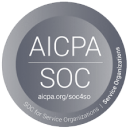This blog recaps The Great Fraud Showdown, a webinar hosted by Salv and We Fight Fraud, where 300+ participants proved how real-time intelligence sharing can reverse scams and recover stolen funds.
It’s for financial crime professionals at banks, fintechs, and PSPs who want to understand how collaboration can significantly improve fraud detection and recovery.
Key takeaways
- Scams can often look like legitimate payments in isolation
- Additional intelligence from other financial institutions can stop the flow of stolen money
- In a live simulation, over 300 fraud professionals tested what happens when banks and fintechs collaborate
- Institutions that collaborate are able to recover more stolen funds
- Salv Bridge enables secure, real-time intelligence sharing between regulated financial institutions
Let’s say you work for a bank. A customer’s account activity triggers an alert. Do you freeze it and investigate or let payments continue? If you work in fincrime, you’ve likely faced this question before.
There are a range of factors at play. From the account activity itself to external factors like the size of your alert backlog. Or how easy it will be to get hold of the additional information you need.
Scam transactions can look normal. Normal ones often look suspicious. The dilemma is: how do you know which is which?
That was the challenge we set in The Great Fraud Showdown — an interactive webinar by Salv and We Fight Fraud, where over 300 fincrime professionals stepped into the role of frontline investigators.
Their task? To make fast decisions based on limited information. But there was a twist: only by working together could the full picture emerge.
Every time Salv and We Fight Fraud come together, we see sharp thinking and open conversation from the audience. And this one brought the message home louder than ever.
Why fraud detection fails in isolation
Financial crime is escalating. In the UK alone, authorised push payment (APP) fraud losses totalled nearly £450 million in 2023. Yet institutions still operate in silos, leaving critical intelligence trapped within individual banks.
The exercise made a simple point with dramatic clarity: in the fight against complex, fast-moving financial crime, intelligence sharing isn’t a nice to have. It’s essential.
How financial crime collaboration helped spot a scam
Scenario: A £20,000 “Investment Opportunity”
The three crime-fighting teams, representing the fictional Nunster Bank, FlexPay, and (the aptly named) Uncooperative Bank, reviewed a series of flagged transactions. Their job was to assess the risk, take appropriate action, and prevent losses.
The scenarios were based on real fraud cases:
- An Operations Director convinced to invest in cryptocurrency via LinkedIn
- A young Student receiving multiple payments on the same day
- A Pensioner receiving an unusually high payment
Some red flags were obvious in hindsight. But in isolation, they were ambiguous or completely invisible.
This ambiguity was deliberate, reflecting a major challenge in fraud prevention: fragmented visibility. You can’t stop what you can’t see. Or, as someone said on a Salv Team call recently: “You don’t know what you don’t know. But someone else might know what you don’t know.”
For Nunster Bank, an outgoing payment of £20,000 to FlexPay looked suspicious. With the reference “LI investment opp”, the payment turned out to be one of four outgoing payments of unusual amounts, all made within a week. Looking for clarity, Nunster used Salv Bridge to send a secure alert to FlexPay.
On the other side of the “investment opp”, FlexPay could see the incoming funds and onward payments to cryptocurrency exchanges. Plus, the almost immediate redistribution of £20,000 to an account with the Uncooperative Bank.
Scenario: missed signals at The Uncooperative Bank
In contrast, another unusual transaction occurred that a customer made over the phone. Unfortunately, the bank receiving this payment was Uncooperative by name and by nature.
Without a channel for fast communication like Salv Bridge where scam intelligence could be shared, the FlexPay team was left debating whether to intervene or monitor.
Over at The Uncooperative, meanwhile, the final scenario brought home the cost of missed opportunities: an elderly customer has received £20,000, which is a considerable amount of money. £19,500 was immediately moved to another account.
In fact, it was the same £20,000 originally sent as part of the LinkedIn investment scam which, unsurprisingly, turned out to be fraudulent.
But The Uncooperative had no way to quickly verify this.
They would have had to rely on emailing the fraud team – or make the call based on limited, unverified context.
What the simulation proved about collaboration
The Uncooperative’s customer was unwittingly being used as a money mule, which may or may not have been picked up by alerts. The customer thought she was making a legitimate payment, due to social engineering at play, so she would have never reported it. And even if she had been contacted and asked, she may have wanted to proceed anyway.
Even the best internal systems fall short without shared context. The biggest breakthroughs didn’t come from sharper alerts or better models — they came from better communication. Fraud detection and recovery see a huge improvement when institutions are able to share context, raise red flags in real-time, and trust that their fellow crime fighters will act.
Speed matters here. Under the UK’s reimbursement rules for APP fraud, both sending and receiving institutions are held liable for customer losses. A coordinated response is better for customers, and it reduces fraud losses.
The Great Fraud Showdown may have been fictional in format, but everything else was real. Real scams. Real reactions. Real stakes.
Why real-time intelligence sharing matters
What emerged was a case for a stronger industry network. Toward the end of the session, when the groups came back together, everyone was given all of the pieces of the puzzle.
Only then could the audience see exactly how collaboration and real-time communication make the difference between preventing fraud losses and missing the opportunity altogether.
There’s always room to improve our internal defences. But optimising without a full view of the picture is only ever going to get us so far.
As one attendee said: “The legal framework for data sharing is there. We just need to be bold! Criminals don’t care about GDPR or any other legal framework!”
As fraudsters keep evolving, so must our defences. That means more than vigilance. It means shared visibility. The event was fictional. The fraud wasn’t. And neither was the message: the teams that work together are the ones that win.
What is Salv Bridge?
Salv Bridge is a real-time intelligence-sharing platform used by over 100 financial institutions across Europe to detect, block, and recover scams collaboratively. Read how it works in this real-world example.
For more insights on financial crime collaboration in practice, get a summary here our webinar recap with We Fight Fraud or learn how information sharing helps prevent APP fraud.
Frequently asked questions
Q: What is financial crime collaboration? A: Financial crime collaboration refers to the real-time sharing of fraud intelligence between financial institutions to detect and prevent scams more effectively. Q: How does Salv Bridge support collaboration? A: Salv Bridge is a secure platform that lets financial institutions share scam-related data in real time, helping to block fraudulent payments before they happen. Q: What’s the risk of not collaborating? A: Working in isolation often means institutions miss critical red flags, leading to avoidable fraud losses and regulatory consequences.
Learn how Salv Bridge enables financial crime collaboration
See how leading banks and fintechs use Salv Bridge to recover funds, stop scams, and collaborate with confidence. Explore Salv Bridge here.



